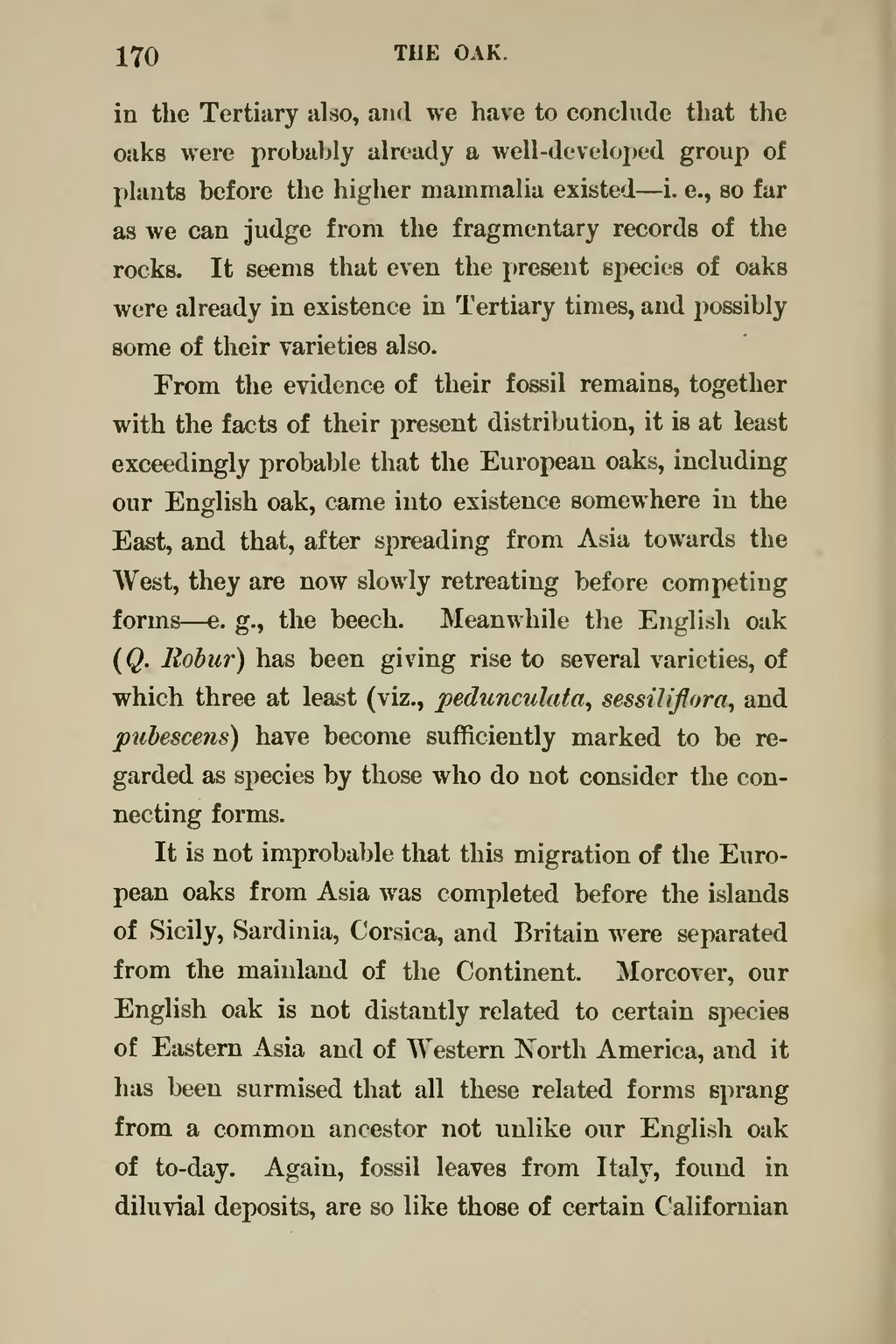in the Tertiary also, and we have to conclude that the oaks were probably already a well-developed group of plants before the higher mammalia existed—i.e., so far as we can judge from the fragmentary records of the rocks. It seems that even the present species of oaks were already in existence in Tertiary times, and possibly some of their varieties also.
From the evidence of their fossil remains, together with the facts of their present distribution, it is at least exceedingly probable that the European oaks, including our English oak, came into existence somewhere in the East, and that, after spreading from Asia towards the West, they are now slowly retreating before competing forms—e.g., the beech. Meanwhile the English oak (Q. Robur) has been giving rise to several varieties, of which three at least (viz., pedunculata, sessiliflora, and pubescens) have become sufficiently marked to be regarded as species by those who do not consider the connecting forms.
It is not improbable that this migration of the European oaks from Asia was completed before the islands of Sicily, Sardinia, Corsica, and Britain were separated from the mainland of the Continent. Moreover, our English oak is not distantly related to certain species of Eastern Asia and of Western North America, and it has been surmised that all these related forms sprang from a common ancestor not unlike our English oak of to-day. Again, fossil leaves from Italy, found in diluvial deposits, are so like those of certain Californian
